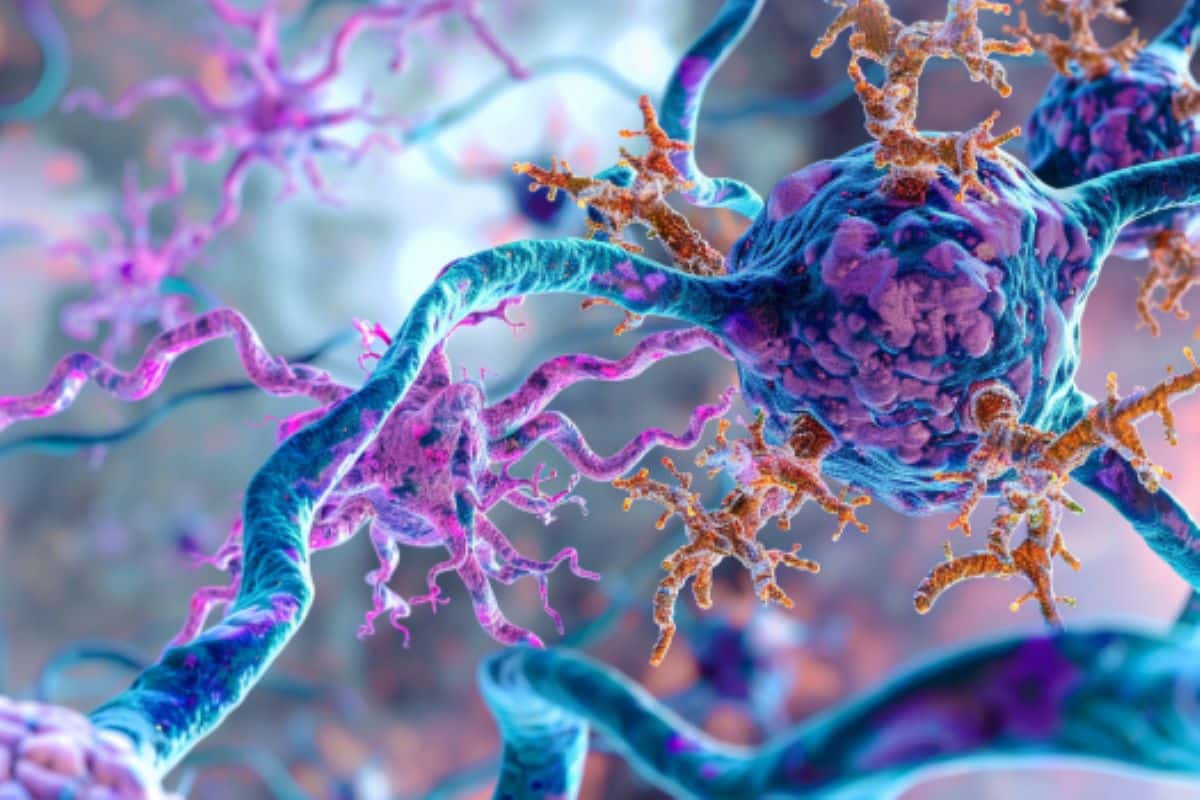Summary: A new study reveals the crucial role of the protein Contactin-4 (CNTN4) in neuron development, impacting both neurodevelopmental disorders and Alzheimer’s disease. Researchers found that CNTN4, linked to autism, interacts with the Alzheimer-related protein APP, affecting neuron growth in the brain’s cortex.
This discovery highlights a co-dependent relationship essential for healthy brain development. The findings offer new insights into the overlap between developmental and neurodegenerative diseases.
Key Facts:
- Key Protein: CNTN4 is crucial for neuron development and linked to autism and Alzheimer’s.
- Protein Interaction: CNTN4 and APP interaction is vital for healthy brain function.
- Neuron Impact: Knocking out CNTN4 alters neuron growth in the brain’s cortex.
Source: University of Exeter
New research has shed light in the complex interplay between cell proteins, and how they impact on neurons in neurodevelopmental disorders and Alzheimer’s disease.
A new study led by the University of Exeter and published in Royal Society Open Biology has discovered the key role that the protein Contactin-4 (encoded by the gene CNTN4) plays in shaping neurons.
The researchers began studying CNTN4 because it was known to have a role in autism, but its functional roles were not well understood. The team explored how CNTN4 functions within the brain, particularly its interactions with proteins involved in neurodegenerative diseases like Alzheimer’s disease.
For the first time, the researchers studied mice who have had the CNTN4 gene knocked out in the cortex, the region of the brain responsible for key functions including memory, thinking and reasoning. They found that neurons developed in a different way in the cortex region.
Researchers have demonstrated for the first time in human cells the interaction between genes CNTN4 and APP, a gene strongly linked to Alzheimer’s disease, revealing a co-dependent relationship that is essential for brain development, and specifically for the healthy growth of neurons.
They found that CNTN4 not only contributes to neural elongation in the frontal cortex region of the brain, but also CNTN4 expression is regulated via a relationship with APP.
Using studies in genetically modified human cells, the team also discovered that a complex interaction exists between CNTN4 and APP. If CNTN4 is knocked out, then levels of APP decrease, but not to zero. The scientists believe that APP may compensate for the loss of CNTN4, and vice versa.
The study’s lead author, Dr Rosemary Bamford, of the University of Exeter Medical School, said: “It was quite remarkable to discover that CNTN4, a gene linked to developmental processes, also plays a role in modulating factors involved in Alzheimer’s disease.
“This intersection of developmental and neurodegenerative pathways offers exciting new insights into the broader implications of these proteins.”
Senior author Dr Asami Oguro-Ando, of the University of Exeter Medical School, said: “Looking ahead, my group is keen to further dissect the molecular mechanisms underpinning the interaction between CNTN4 and APP and explore their wider implications for disorders like Alzheimer’s and Autism Spectrum Disorder.
“Our next steps involve clarifying how the CNTN4-APP interaction impacts neural activity. Understanding this interaction is crucial as it represents a fundamental step towards a comprehensive grasp of neurodevelopmental and neurodegenerative disorders.”
About this Autism and Alzheimer’s disease research news
Author: Louise Vennells
Source: University of Exeter
Contact: Louise Vennells – University of Exeter
Image: The image is credited to Neuroscience News
Original Research: Open access.
“CNTN4 modulates neural elongation through interplay with APP” by Rosemary Bamford et al. Royal Society Open Biology
Abstract
CNTN4 modulates neural elongation through interplay with APP
The neuronal cell adhesion molecule contactin-4 (CNTN4) is genetically associated with autism spectrum disorder (ASD) and other psychiatric disorders.
Cntn4-deficient mouse models have previously shown that CNTN4 plays important roles in axon guidance and synaptic plasticity in the hippocampus.
However, the pathogenesis and functional role of CNTN4 in the cortex has not yet been investigated.
Our study found a reduction in cortical thickness in the motor cortex of Cntn4 −/− mice, but cortical cell migration and differentiation were unaffected. Significant morphological changes were observed in neurons in the M1 region of the motor cortex, indicating that CNTN4 is also involved in the morphology and spine density of neurons in the motor cortex.
Furthermore, mass spectrometry analysis identified an interaction partner for CNTN4, confirming an interaction between CNTN4 and amyloid-precursor protein (APP). Knockout human cells for CNTN4 and/or APP revealed a relationship between CNTN4 and APP.
This study demonstrates that CNTN4 contributes to cortical development and that binding and interplay with APP controls neural elongation. This is an important finding for understanding the physiological function of APP, a key protein for Alzheimer’s disease.
The binding between CNTN4 and APP, which is involved in neurodevelopment, is essential for healthy nerve outgrowth.

Sarah Carter is a health and wellness expert residing in the UK. With a background in healthcare, she offers evidence-based advice on fitness, nutrition, and mental well-being, promoting healthier living for readers.







